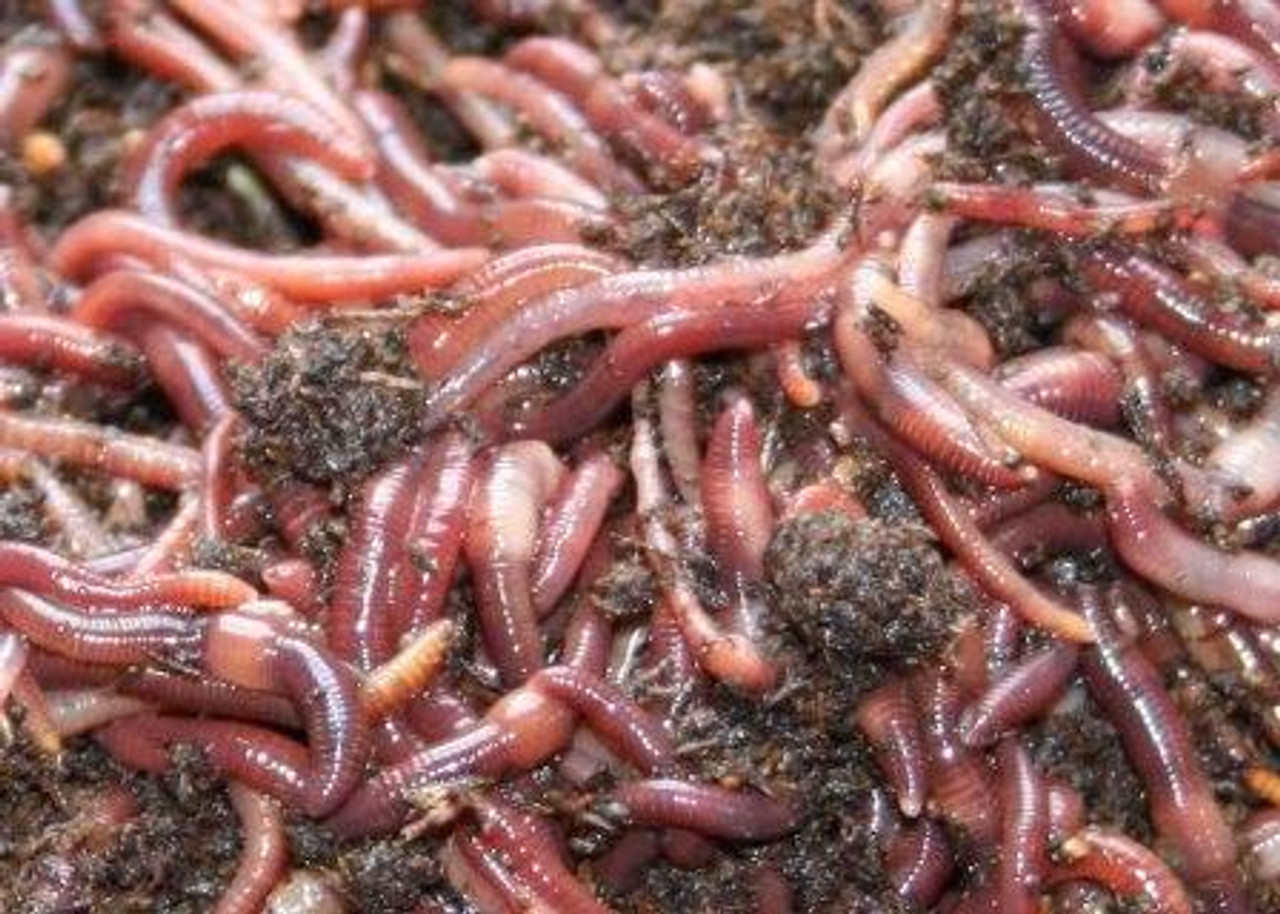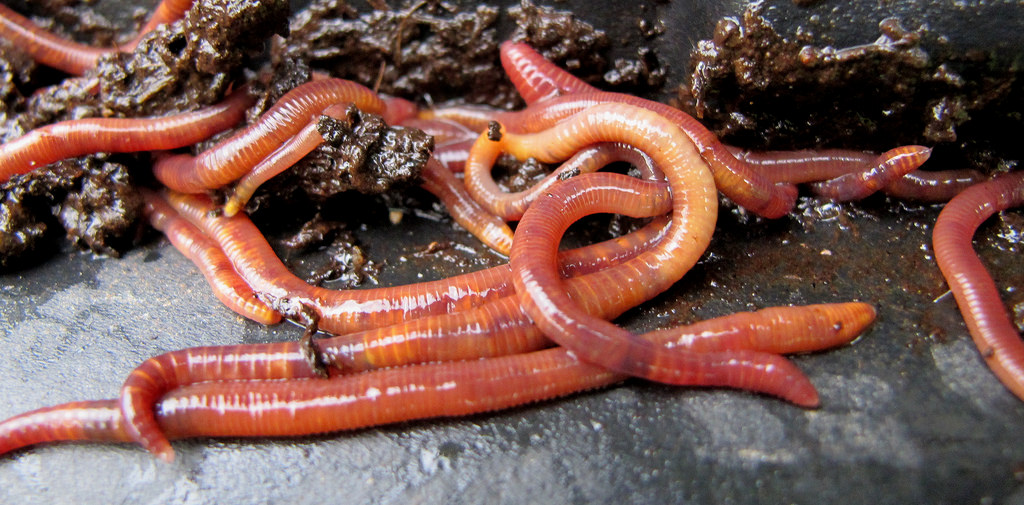Red Wigglers: The Unsung Heroes of Organic Waste Recycling
Red wigglers, or Eisenia fetida, offer as essential agents in the natural waste recycling procedure, transforming thrown out products right into valuable vermicompost. As the globe increasingly looks for solutions to combat waste buildup and enhance farming performance, recognizing the function of these worms ends up being essential.
What Are Red Wigglers?
The remarkable resilience of red wigglers, clinically called Eisenia fetida, highlights their vital function in organic waste recycling. These tiny, reddish-brown earthworms are generally found in decomposing raw material, such as compost stacks and manure stacks. Lake Hickory Bait. Unlike other earthworm species, red wigglers prosper in nutrient-rich settings and are highly effective at damaging down natural products, making them crucial for vermicomposting

(Red Wiggler Express)In enhancement to their duty in waste reduction, red wigglers add to dirt health and wellness by enhancing soil structure and oygenation through their burrowing tasks (Lake Hickory Bait). Their visibility in composting systems not only boosts disintegration rates however additionally advertises a sustainable strategy to squander administration, showing their relevance in ecological conservation initiatives
Benefits of Composting With Worms
Composting with worms, especially red wigglers, supplies various benefits that improve both waste administration and dirt wellness. First, these worms successfully damage down natural waste, transforming it into nutrient-rich vermicompost that enriches soil. This process increases decay, enabling a faster recycling of kitchen scraps and various other organic products contrasted to typical composting approaches.
Furthermore, the vermicompost generated by red wigglers is including useful microbes, which assist boost soil framework, oygenation, and wetness retention. This improves the general health of plants, advertising vigorous growth and increased yields in gardens and farming settings. Moreover, using worms in composting reduces the manufacturing of greenhouse gases, such as methane, adding to a much more lasting waste management system.

Exactly How to Start Vermicomposting
Establishing a vermicomposting system is a simple process that can produce considerable advantages for both waste administration and dirt enrichment. To start, select a suitable container, such as a plastic container or wood box, with adequate air flow openings to ensure proper air movement. The measurements need to ideally be about 2 feet by 3 feet, enabling adequate space for the worms to flourish.
Next, prepare bed linens material, which can contain shredded newspaper, cardboard, or coconut coir. This bed linens must be moistened to produce an appropriate habitat for the worms. When the bed linens is in area, introduce red wigglers (Eisenia fetida) right visit homepage into the bin, typically around one extra pound of worms for every single square foot of area.
Adhering to the positioning of worms, add natural waste, such as vegetables and fruit scraps, coffee premises, and smashed eggshells. Prevent adding dairy products, meat, or oils, as these can produce smells and draw in pests. Position the bin in a shaded, temperature-controlled area to maintain ideal problems for worm task. With these steps, you will efficiently initiate a vermicomposting system that adds to lasting waste monitoring and improves your soil.
Preserving a Healthy Worm Bin
(Lake Rhodhiss Bait)Maintaining a worm bin flourishing needs normal attention and treatment to ensure the health and wellness of the red wigglers and the performance of the composting procedure. Appropriate upkeep begins with keeping track of the wetness degrees; the bin should perspire yet not waterlogged. An excellent policy of thumb is to maintain an uniformity comparable to a wrung-out sponge.
Gently mixing the bed linen and food scraps every few weeks stops compaction and makes certain that all worms have accessibility to oxygen. In addition, it is important to feed the worms properly.
If the bin becomes also hot or cold, the worms may come to be worried. By faithfully handling these aspects, one can preserve a robust and effective worm container.
Influence on Sustainable Living
The effective upkeep of a worm bin not only profits the wellness of red wigglers however likewise contributes significantly to lasting living methods. By reusing organic waste, such as cooking area scraps and lawn particles, red wigglers aid divert significant amounts of material from land fills. This reduction in waste not only lowers greenhouse gas emissions however likewise lessens the ecological burden related to waste management.
In addition, the spreadings generated by red wigglers serve as a nutrient-rich organic plant food, enhancing soil wellness and advertising plant growth. This all-natural choice to chemical fertilizers supports sustainable farming and horticulture techniques, minimizing dependence on synthetic inputs that can damage ecosystems. Additionally, worm composting cultivates awareness of waste management, motivating individuals and neighborhoods to adopt more lasting practices.

Conclusion
In summary, red wigglers offer as essential factors to natural waste recycling through their efficient decay of organic materials. Their capacity to produce nutrient-rich vermicompost enhances soil health and sustains lasting farming techniques. By incorporating vermicomposting right into waste monitoring approaches, people and areas can significantly reduce waste while advertising ecological sustainability. The duty of Eisenia fetida in promoting healthy environments highlights the significance of these organisms in achieving lasting living and boosting dirt fertility.